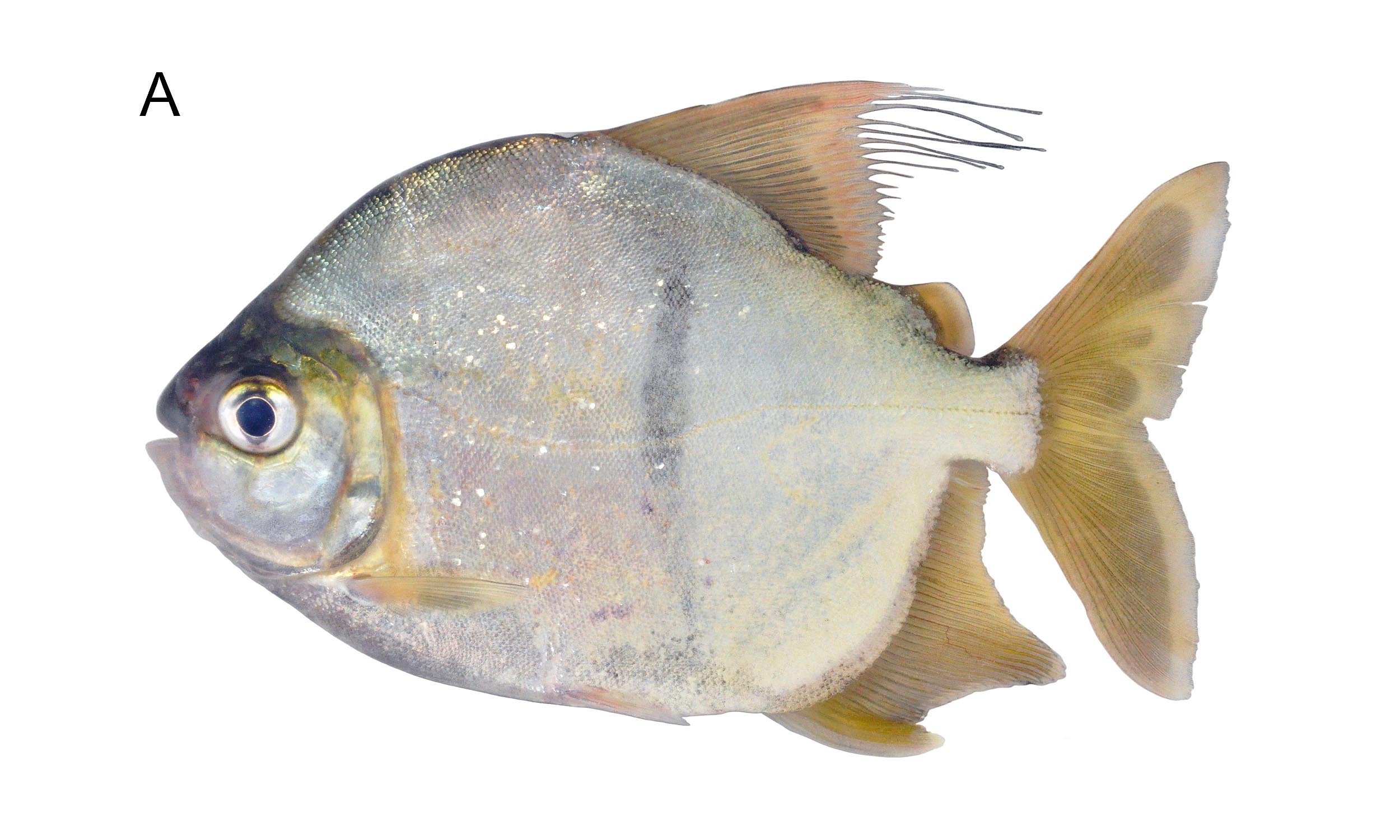Meet Myloplus Sauron: The Amazonian Fish That Looks Like Trouble But Is a Peaceful Herbivore!











2025-08-10T22:10:06Z

The eye-catching Amazonian fish that could change conservation!
Imagine stumbling upon a fish that resembles the ominous Eye of Sauron from The Lord of the Rings. Surprising, right? Meet Myloplus sauron, a newly described species from the depths of the Amazon that tricks you with its fierce appearance yet turns out to be a gentle herbivore!
With its striking round silver body adorned with a bold black stripe tapering toward its belly, this fish has certainly earned a name reminiscent of one of the world’s most notorious villains. Dr. Rupert Collins, the senior curator of fishes at the Natural History Museum in London, was part of the international team that made this exciting discovery.
Collins expressed his delight, saying, “As soon as my colleagues suggested the name for this fish, we knew it was perfect for it. Its pattern looks a lot like the Eye of Sauron, especially with the orange patches on its body.” Who knew that such a fierce-sounding name would belong to a peaceful creature?
Decoding Myloplus sauron
Belonging to the infamous Serrasalmidae family, which includes the notorious piranhas, Myloplus sauron is a relative of the pacu—also known for its plant-based diet. Instead of razor-sharp teeth, this fish sports human-like molars designed for munching on fruits and seeds rather than tearing flesh.
Its teeth are a marvel, featuring square crowns with enamel ridges that expertly grip and crush fibrous food. Two species resembling M. sauron had long been grouped with M. schomburgkii, but through DNA barcoding and meticulous scale counting, researchers revealed three distinct lineages: M. sauron in the Xingu River, M. aylan in western Amazon tributaries, and a redefined M. schomburgkii in shield rivers farther north and east.
Why does the Eye of Sauron fit? Because in the Xingu’s rocky, clear waters, sunlight dances on the riverbed, making these fish practically glow against the backdrop. The vivid orange blush along their flanks and bright red fins highlight that central stripe, making it a living work of art.
A name worth remembering
Naming this species after a cultural icon not only sparks curiosity but also raises awareness about the river it inhabits. Public attention can be a powerful ally in the fight to protect the unique rapids of the Xingu, which are already under threat from the construction of one of Brazil’s largest hydroelectric dams.
Myloplus sauron's unique teeth
Unlike the razor-like teeth of piranhas, M. sauron exhibits nearly square teeth that come together like a pair of pruning shears. This design is a perfect adaptation for breaking open palm nuts or slicing through thick vegetation. As the Amazon experiences seasonal floods, fish equipped to process tough skins of fruits have a feeding frenzy when trees overhang the flooded banks.
Despite the fact that taxonomists have cataloged around 2,500 species of fish in the Amazon, an astonishing 34 to 42 percent remain undescribed. This means that nearly one in three fish swimming past researchers could still be undocumented.
This unknown drastically complicates conservation efforts. Without reliable species lists, understanding which populations are thriving and which are in decline becomes nearly impossible, especially with threats from mining runoff, overfishing, or dam constructions looming over them.
Mapping a species’ narrow home
Myloplus sauron exists only in the sunlit waters of the Xingu River Basin, cutting through Brazil’s Pará and Mato Grosso states. This rich ecosystem already houses over 600 recorded fish species, with seventy found nowhere else on Earth.
During research, most specimens of M. sauron were collected below the Tamaracá waterfall, where the swift waters cascade over polished granite. The fish's shape suggests it expertly navigates the eddies behind boulders, grazing on algae and leaves swept away by the currents.
To confirm M. sauron as a separate species, a combination of physical and genetic data was used. DNA barcoding—comparing short mitochondrial DNA sequences—helped distinguish M. sauron from close relatives like M. aylan and M. schomburgkii. By analyzing numerous traits, including fin rays, body shape, scale counts, and that signature stripe, researchers confidently classified M. sauron as its own species.
What does this find mean for conservation?
A flashy new name doesn’t guarantee safety. Large dams upstream can disrupt seasonal floods that prompt breeding runs, while unregulated gold mining threatens to cloud clear waters with silt and mercury.
For now, M. sauron is listed as “Least Concern” because its range stretches over several hundred river miles. However, Collins emphasizes that early recognition is crucial.
This discovery underscores the importance of DNA barcoding, a technique that identifies hidden lineages before they disappear. Every new barcode added to global databases enhances our understanding of Amazonian diversity and helps guide future expeditions to rivers likely to harbor even more wonders.
Ultimately, this remarkable find is not just about a new species; it's a call to action for conservation efforts that could save countless fish from disappearing forever.
 Malik Johnson
Malik Johnson
Source of the news: Earth.com